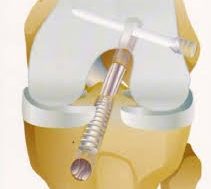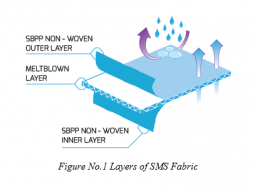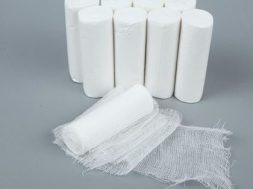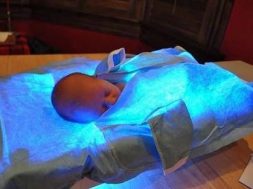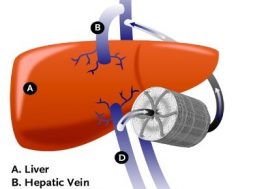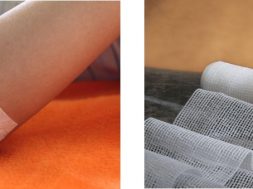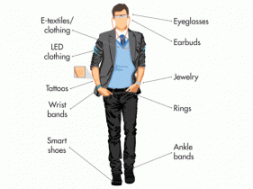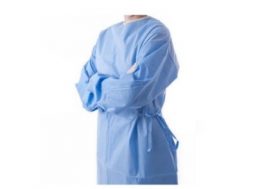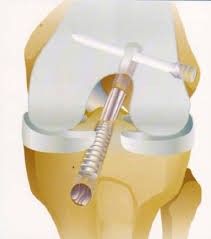
Medical Textiles | New Era in Medical Science | Artificial ligament
Medical Textiles | New Era in Medical Science | Artificial ligament
Medical Textile :
A general term which is used for variety of application in medical sector in addition of implantable applications.
Medical textile is known as healthcare textile. It is one of the most expanding sectors of technical textile .For medical & healthcare products, medical textile ranges from gauze or bandage materials to scaffolds of tissue culturing and a large variety of prostheses for permanent body implants.
Artificial ligament :
An artificial replacement of natural ligament which are bands of tough & elastic tissue that binds together at joint so that we can move.
The knee is vulnerable & mostly may be subjected to injury when it goes under abrupt or progressive stress as anyone who participates on sports or other strenuous activities, one of its four ligaments-Anterior Cruciate Ligament (ACL) is likely to tear.
For solving this health issue, the beginning of artificial ligament journey took place.
Introduction to Anterior Cruciate Ligament (ACL) :
Rupture of Anterior Cruciate Ligament (mostly damaged ligament) is a common injury to active people & one of the most common knee injuries in sports. It’s estimated that annual incidence in ACL injury is 1 in 3000 amongst the general population in USA, more than 150000 new ACL ruptures annually.
A survey show that about 60-65% women in world have ligament problem because of knee injury. 30-35% sports people have ligament people frequently.
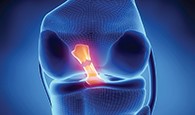
Now-a-days, ACL reconstruction surgery is a major area of research worldwide. It’s one of the most frequently performed procedures in knee surgery now.
Overview of ACL History:-
The history of ACL surgery can be tracked down before the Egyptian time. In famous Smith Papyrus (in 3000 B.C.) first ACL description was found.
– Claudius Galen, a Greek physician, in Roman Empire, was first to describe about ACL.
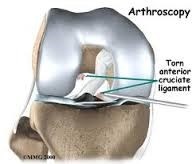
From 1800-1900 :
- In 1836, Webers Brother from Goettingen noted after transaction of ACL an abnormal anterior-posterior movement.
- The first recorded description of ACL rupture was done by Stark, in 1850.
Paul Segond, described an avulsion fracture of anterolateral margin of tibia region in 1879. - In 1900, Battle first reported about an ACL repair which was done two years earlier during treatment of dislocation of knee & it gave a satisfactory result.
From 1901- 2000 :
- In 1903, Battle reported the repair of both Cruciate ligament of a 41-year-old miner. A diagonosis of rupture of anterior & posterior ligaments was made. After some weeks of cast immobilization, the knee was allowed to stretch & after six years the patient reported the knee to be perfectly strong.
- In 1912, KH Giertz, operated an 13 year old girl with a totally unstable knee. For all practical purpose, the knee was stable.
- In 1913, Goetijes produced a detailed study of rupture of Cruciate ligament.
- In 1917, Hey Grove published a short case report on reconstruction of ACL.
- In 1939, Marcey reported on using semi tendinosus tendon for constructing ACL.
- In 1963, Jones published a new surgical technique named bone patellar tendon bone graft.
- During 1970s synthetic graft was introduced.
- After 1980s remarkable development in using allograft tissue for ACL reconstruction was advanced.
- Along with this during 1980s Arthroscopic ACL reconstruction was getting gradually popular.
Recent Development of ACL :
- In 2003, more anatomic ACL reconstruction has been introduced by double bundle graft.
- Recently by Gortex (porous upgrade of Teflon)
Is used for ligament which consists of 1000 fibres together for full strength.

Research is still going forward which will open up new modification of ACL. But many ACL reconstruction surgeries are being done by bone patellar tendon bone graft method.
ACL reconstruction is invaluable to those who continue try to improve the outcome of the procedure, in order to further advances already made but also to reduce the risk of the repeating past.
Future Development & Innovation :
In order to assemble ligament-like tissue, Structure, different approaches seems to be mandatory.
Such combinations may be-
- Braicing
- Knitting
- Stratifying
- 3-D braiding scaffolds
- Merging scaffolds with sponges
- Merging different material types in a
- Single multiphase scaffold
- aligning
- cross-linking
7.adding mechanical ex vivo stimulation
Scaffolds further need to possess –
- A porous structure
- A full pore inter-connectivity for
- in growth of native cells
- connective collagen fibres
Main strategy with developing functional artificial tissue in tissue engineering is bio-mimicry.
Important future target should be :
- developing scaffolds that match tissue ingrowth rate with degradation rate.
- matching native biomechanical properties.
- improved strength.
- biological integrity.
- ability to mimic the tissue interface properties.
Many steps have been taken but the ideal bio-scaffolds producing is still far away from tissue engineering.
Medicine has come a long way for re-paring the damaged structure, We hope it’s glorious advancement so that in this world many sportsman like our captain will run in the field & will shower the country with rain of victory.
(94)
